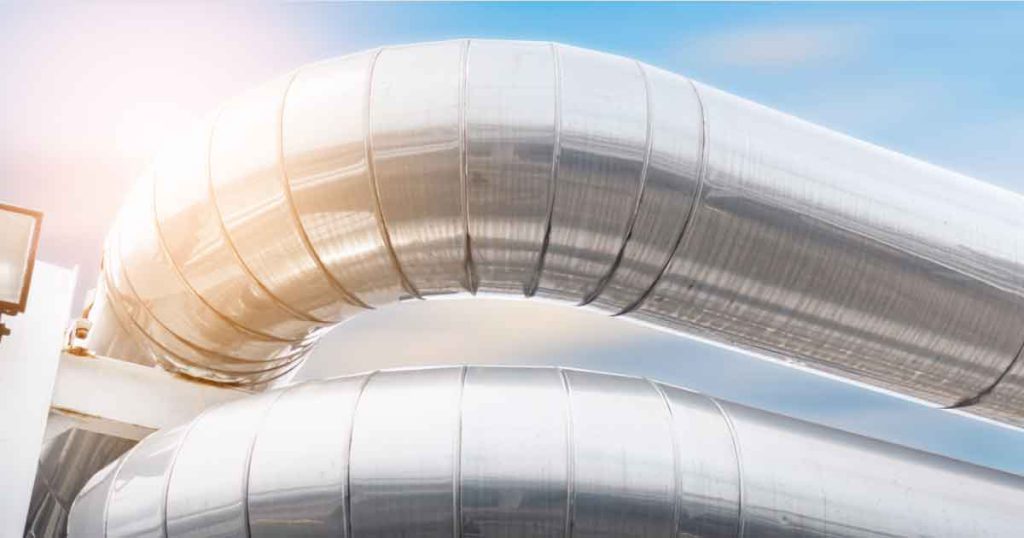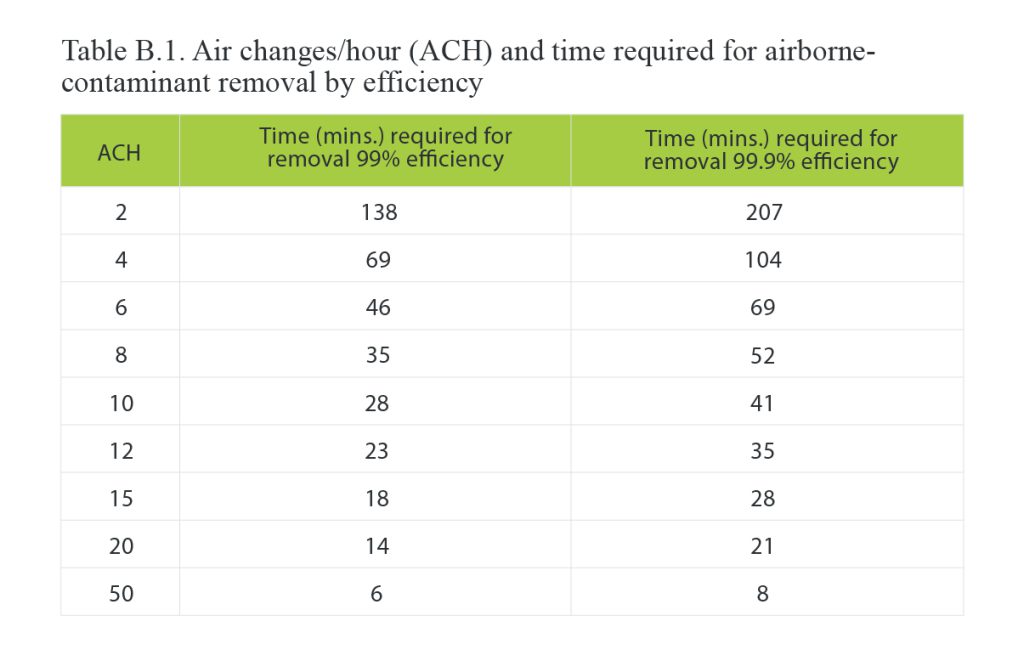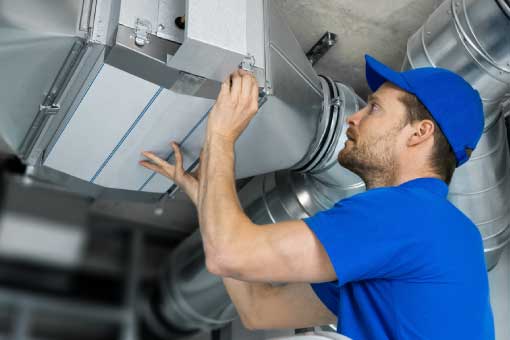Colder weather often brings spikes in COVID-19 and influenza cases. With this in mind, we should continue promoting vaccinations, mask wearing, social distancing, surface cleaning and handwashing inside your buildings. However, we shouldn’t forget about our HVAC systems; they also play an important role in stopping the spread of COVID. In fact, if not properly managed, these systems significantly contribute to virus transmission. To properly protect your facility’s visitors and workers this winter, prep your HVAC system the right way by following these guidelines.
Use an Air Dilution Strategy
Viruses like SARS-CoV-2 travel within tiny liquid droplets expelled through our coughs and sneezes. These droplets can range in size from larger particles (5-10 μm) to smaller ones (less than 5 μm). Larger droplets fall to the ground quickly, while smaller aerosols linger in the air much longer. Their hang time presents both a problem and an opportunity. The problem is that these tiny airborne particles can easily cluster together, becoming concentrated within small areas like offices. Concentration makes them more potent and contagious.
However, these clusters are also easily dispersed or “diluted” by adequate air flow. So, an effective dilution strategy is to keep a good mixture of air within every part of your building. It’s a similar idea to running vs standing water. Which is safer to drink? Here are some tips for an effective dilution strategy.

Increase Outside Air Flow
Increasing outside air flow helps dilute recirculated interior air and break up any high concentration particle clusters. The CDC recommends the following tips when introducing outside air flow into your interior spaces:
- Disable demand-controlled ventilation (DCV) systems
- Open outdoor air dampers beyond minimum settings
- When conditions allow, open windows and external doors
- Use stand-alone fans inside windows
- Set indoor AC unit fan speeds to “on” instead of “auto”
- Run your systems longer, 24/7 if possible
CAVEAT: Increasing outside air flow during very cold or very warm weather raises your energy costs and puts added stress on your system to maintain set points. So, some actions may only be practical during milder weather. Another concern is the introduction of pollutants and pollen into the building. For occupants with allergies, outside air could contain possible health risks from contaminants. Increasing outside air flow during very cold or very warm weather raises your energy costs and puts added stress on your system to maintain set points. So, some actions may only be practical during milder weather.
Another concern is the introduction of pollutants and pollen into the building. For occupants with allergies, outside air could contain possible health risks. Most higher-rated filters can catch pollen (which is between 5 -11 μm) so introduction of outside air through fans, open windows and doors pose the greater risk.
Target 5 Air Changes Per Hour
Your air change rate (ACH) is a measure of how often you replace the air within a space. However, ACH is a bit misleading since one cycle doesn’t equate to 100% removal. In fact, it takes longer than you’d expect to vacate any contaminants from a room.
“When we change air in a room,” explains Lance Jimmieson, of Jackson Engineering, “we’re not magically taking out all of the air that’s there and replacing it with fresh air. It comes in, mixes and turns over, and typically mixes between perimeter and center zones. So, we’ve got to remove it.”
Jimmieson advises targeting a minimum of 5 air changes/hr (12 cycles) and bases his recommendation on CDC data (Table B.1). “Even with ten air changes an hour, i.e. every 6 minutes, it’s still going to take half an hour to get rid of any traces of an aerosol in the room, so air change rates need to be relatively high,” he explains.

Upgrade Air Filtration Systems
The choice of filter matters when trying to arrest droplets containing small contaminants like viruses. ASHRAE recommends a minimum MERV-13 grade or better for commercial buildings. MERV-13 through 16 can achieve a 95-99% average removal efficiency for particles from 0.3 to 1.0 μm.
High Efficiency Particulate Air (HEPA) filters have an even higher performance, capturing 99.97% of particles with a size of 0.3 μm. However, their superior efficiency creates more pressure drop in your system, which will reduce airflow rates and therefore system performance.
CAVEAT Pressure drops from upgrading filters can have a significant impact on your HVAC system. In fact, most managers and owners will find it too difficult or impossible to retrofit their HVAC systems with HEPA filters without a costly or significant redesign. This hurdle is why ASHRAE recommends using portable systems with HEPA filters. Also, higher grade filters are costly and single use, so expect an uptick in operating costs.
Consider UV Germicidal Irradiation
Ultraviolet germicidal irradiation (UVGI) systems use short wavelength UV-C light to kill viruses and bacteria before they’re distributed by your ventilation system. UVGI systems for HVAC are usually mercury-based lamps or LEDs. As viruses pass through the HVAC system, the lamps “inactivate” any viruses captured by high efficiency filters or that move through the AHU.
UVGI lamps contribute to air sterilization, especially where outside air flow is restricted and/or dilution efforts are insufficient. However, UV-C does have limits. Jimmieson notes that one critical restriction that’s often overlooked is particle size. “By and large, a good rule of thumb is that if you’ve got a particle size that is bigger than 5 μm then you’re going to struggle to nuke that particle with UV light.”
It’s a fact that has implications for your filtration system, since low efficiency filters allow particles greater than 5 μm to pass through. If those larger particles are hosting viruses, then they may not be neutralized by your UVGI. “You really want to position the UVGI system downstream of a good quality filter to take the lumps out of the air,” Jimmieson recommends.

